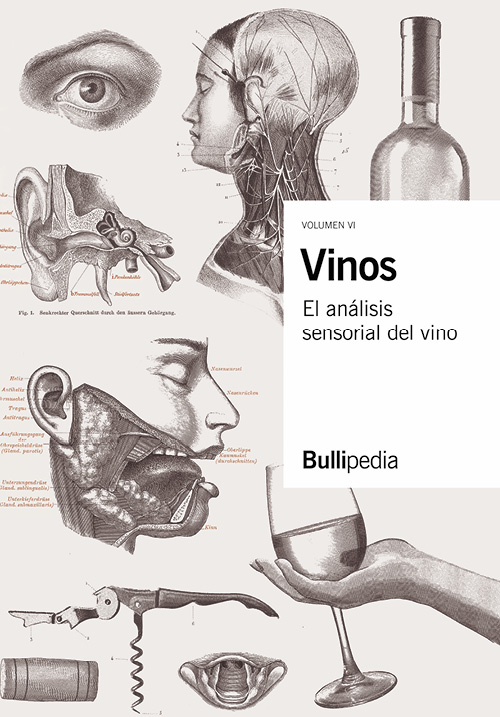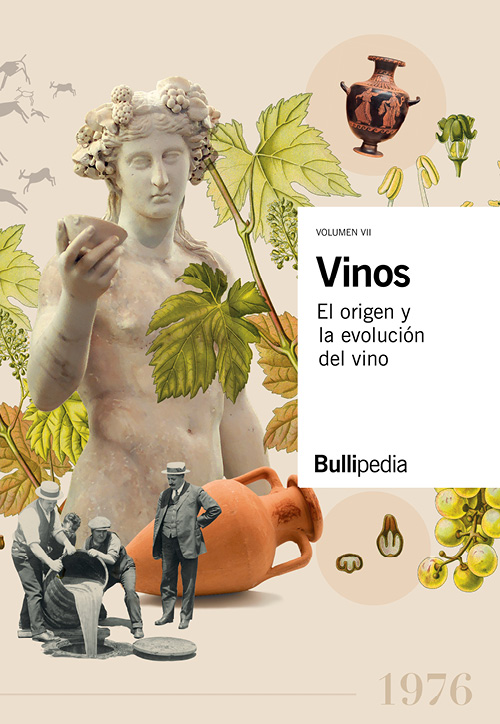Wines. Vinification and classifications (Volume II)
This second volume of the Wine Sapiens focuses on the science of winemaking and takes the reader through the philosophy and art of winemaking. A thought-provoking volume offering a clear explanation of how and where grapes are transformed into this wonderful liquid, wine.
664 pages
230 x 330 mm
Hard cover
ISBN: 978-84-09-08868-3
COMPLETE THE WINE SERIES...

A number of books have been published by Bullipedia on differing themes: drinks, cocktails, Nikkei cuisine, and others. For each title, Bullipedia has applied its Sapiens methodology. Following the successful publication of the first volume of Wine Sapiens titled “Wines. Viticulture and the contextualization of wine (Volume I)” the second volume is now available, titled “Wines. Winemaking and classifications (Volume II)”.
The academic definition of the term winemaking is: The fermentation of grape must, or the processing of grape juice into wine. A substance that is not wine is turned into wine in the process called winemaking. This definition seems impeccable, but is this process really so limited? Does it only take place in the fermentation room of a winery, or does it perhaps begin in the vineyard? Moreover, does the process continue in time once the wine has been bottled? Or even, conceptually, upon reflection on the end result?
The aim of this volume is to list and explain the different tools and techniques of winemaking, in a rigorous, systematic manner, all the while bearing in mind that winemaking is an activity with an artistic and emotional expression. We employ the Sapiens methodology to carry out this task, applying an innovative, creative and enlightening approach to a subject already in receipt of an abundant amount of literature.
The Sapiens method, created by Ferran Adrià and elBullifoundation, under the motto “Innovation through understanding”, consists of incorporating a holistic and comprehensive outlook to relate, contextualise, interpret, compare, identify, order and associate multidisciplinary data and knowledge.
In keeping with the preceding analysis, the final section of Vol. II focuses on wine classification, with a survey of the means used to organise and categorise a bottle of wine, giving practical examples. Although the list is not all-encompassing, many varied and engaging wines are included.
This allows us to appreciate and reflect upon what has been explained so far (including Vol. I). Moreover, it encourages a creative approach when faced with possible practical applications – in the restaurant sector, as well as in any other field – by demonstrating that wine can be much more than just “reds or whites”.
In this section is a short summary of each chapter of the book
Download in PDF
CHAPTER 1
INTRODUCTION TO WINEMAKING
Continue reading >

CHAPTER 2
MOVEMENTS IN WINEMAKING
Continue reading >

CHAPTER 3
PRE-FERMENTATION TECHNIQUES
Continue reading >

CHAPTER 4
FERMENTATION TECHNIQUES
Continue reading >

CHAPTER 5
AROMATIC COMPOUNDS IN WINE
Continue reading >

CHAPTER 6
WINE AGING
Continue reading >

CHAPTER 7
POST-FERMENTATION TECHNIQUES
Continue reading >

CHAPTER 8
BOTTLING TECHNIQUES
Continue reading >

CHAPTER 9
TECHNIQUES, TOOLS AND INTERVENTIONS THROUGHOUT THE PROCESS
Continue reading >

CHAPTER 10
WINEMAKING OF OTHER CATEGORY WINES
Continue reading >

CHAPTER 11
THE SETTING FOR WINEMAKING
Continue reading >

CHAPTER 12
WINEMAKING MODELS ACCORDING TO THE AESTHETIC IDEAL
Continue reading >

CHAPTER 13
WINE CLASSIFICATIONS
Continue reading >

The aim of this volume is to list and examine the different tools and techniques of winemaking from a perspective that is both meticulous and scientific, all the while bearing in mind that winemaking is an activity that, when the result inspires us, can be considered an artform.
TecnoVino

This particular volume offers a scientific and academic overview of the different techniques and tools used to make wine using the “Sapiens” method. This was created by world-famous chef Ferran Adrià and his Bullifoundation, and it essentially refers to learning about something to understand it, and understanding it to later create something, and it involves interpreting, comparing, identifying and organizing multidisciplinary data and knowledge from a holistic standpoint.
Food and Wines from Spain

‘Winemaking and classifications’ allows us to understand absolutely everything about the transformation of the grape into this nectar that we call wine.
ED economía Digital





































